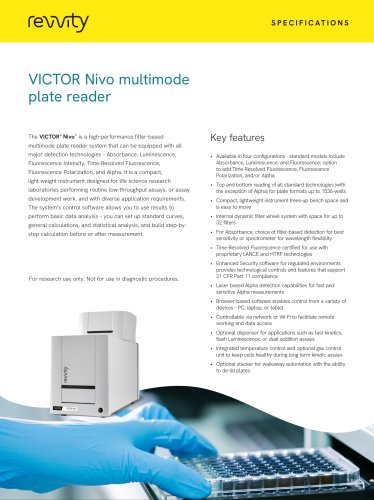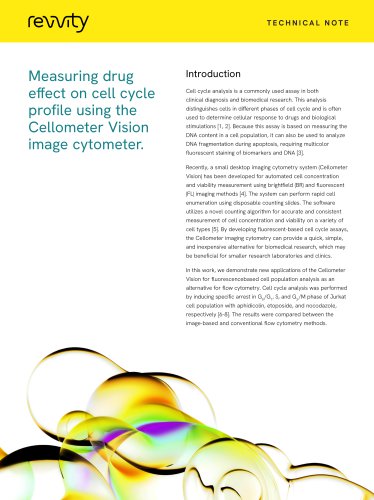 Website:
revvity
Website:
revvity
Group: PerkinElmer
Catalog excerpts

WHITE PAPER Mouse tail genotyping: A LabChip application to assess the genetic modifications on mutant mouse populations. Introduction Mouse tail genotyping in biomedical research is a technique commonly used to assess the effects of genetic modifications on transgenic and mutant mouse populations. Expanding mouse models have dictated that these time-intensive experiments be performed in a more rapid, high-throughput manner, leaving scientists constantly searching for more efficient laboratory workflows and generation of higher quality data in order to keep up. Typical mouse genotyping workflows include the isolation and purification of DNA fragments from samples followed by PCR-amplification, electrophoretic separation and analysis. The process can include multiple, manual and labor- intensive steps, and becomes extremely time-prohibitive when working with large mouse colonies as they not only require a greater number of samples but also many different genotypes to be processed and analyzed. Depending on the genotyping analysis required, different PCR primer pair combinations may also be needed, further increasing the complexity of experimental design, setup and data interpretation. Here we will highlight how researchers at two organizations utilized robotic liquid handling for genotyping reaction setup and microfluidic-based CE for PCR fragment analysis. This combination of automated solutions dramatically improved their experimental turn-around times and data quality while also reducing hands-on time and labor costs. LabChip® GX Touch™ platform For research use only. Not for use in diagnostic procedures.
Open the catalog to page 1
Mouse tail genotyping. High-throughput genotyping challenges A general overview of the genotyping process is outlined subject to human error during reaction setup and vulnerable in Figure 1. A small portion of the distal tail is removed to lower data quality. The manual preparation of slab gels from young mouse pups. Typically, biopsied samples are for electrophoretic separation of PCR fragments as well then subject to overnight lysis, followed by purification of as the interpretation of results during data analysis can the DNA to remove salts and detergents. The purified DNA also be...
Open the catalog to page 2
Mouse tail genotyping. By incorporating automated solutions into their genotyping program, TaconicArtemis increased their genotyping throughput from 44,000 genotypes in 2007 to 63,000 in 2009 (a 143% improvement) and significantly reduced the hands-on time compared to their previous manual methods. The scientists in the genotyping program presented the following key values that automation brought to their operation: • Automatic data exchange between the in-house information system, liquid handler and LabChip GX decreases pipetting and data entry errors • Manual calculation of master mixes...
Open the catalog to page 3
Mouse tail genotyping. 1. Miller, S.A., Dykes, D.D. and Polesky, H.F. A simple salting out procedure for extracting DNA from human nucleated cells. Nucleic Acids Research, 16 (3):1215 (1988). 2. Cziudaj, H. Caliper Owners Group Meeting Presentation (2010). 3. Linask, K.L. and Lo, C.W. High-throughput mouse genotyping using robotics automation. BioTechniques 38 (2): 219-223 (2005) Optimizing the mouse tail genotyping process using the automated solutions described here were shown to drastically improve workflows, allowing complex experiments involving large numbers of samples and multiple...
Open the catalog to page 4All Revvity catalogs and technical brochures
-
Model 307 Sample Oxidizer
3 Pages
-
chemagic Prepito® instrument
4 Pages
-
chemagic 360 instrument
4 Pages






















